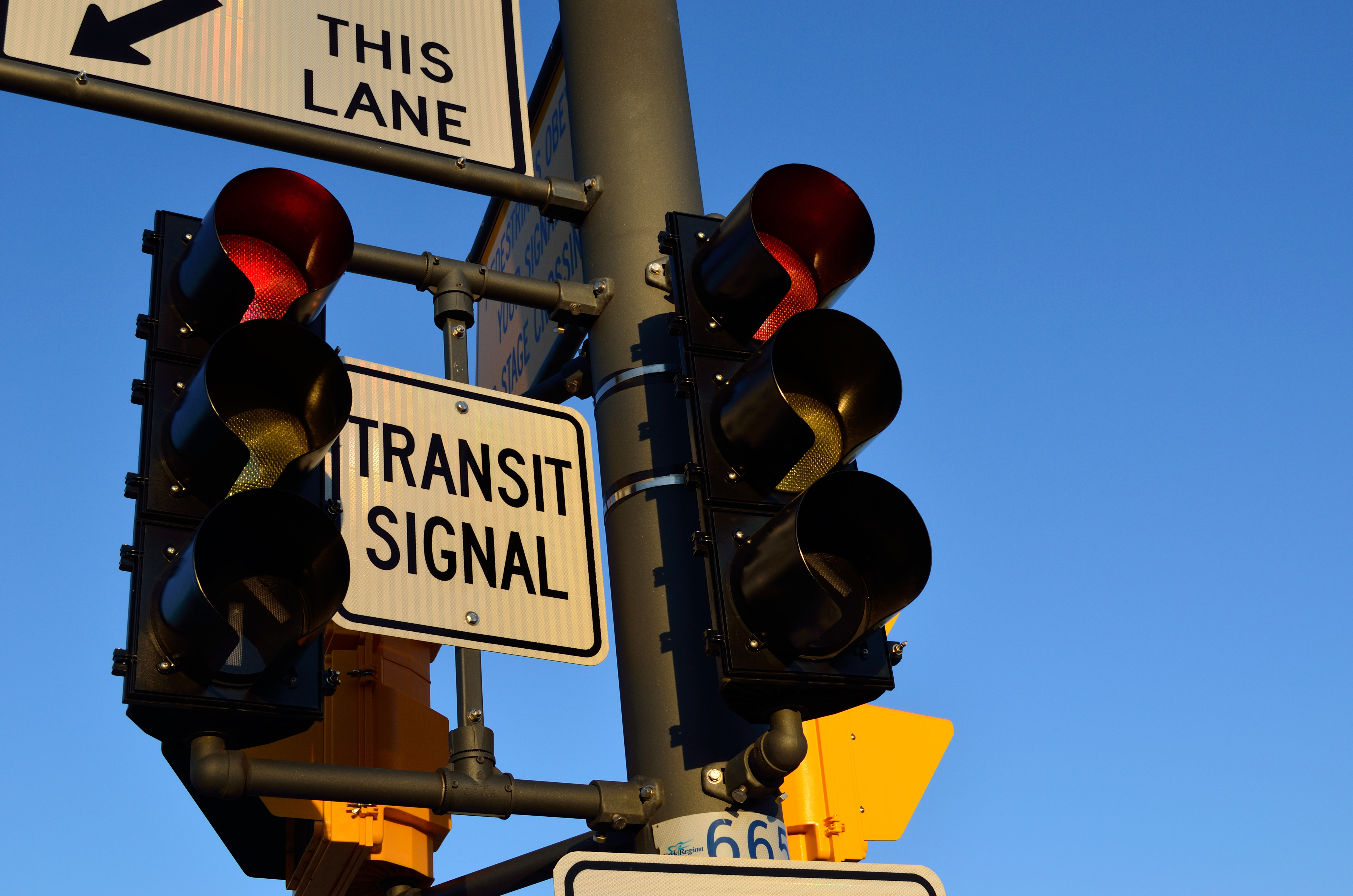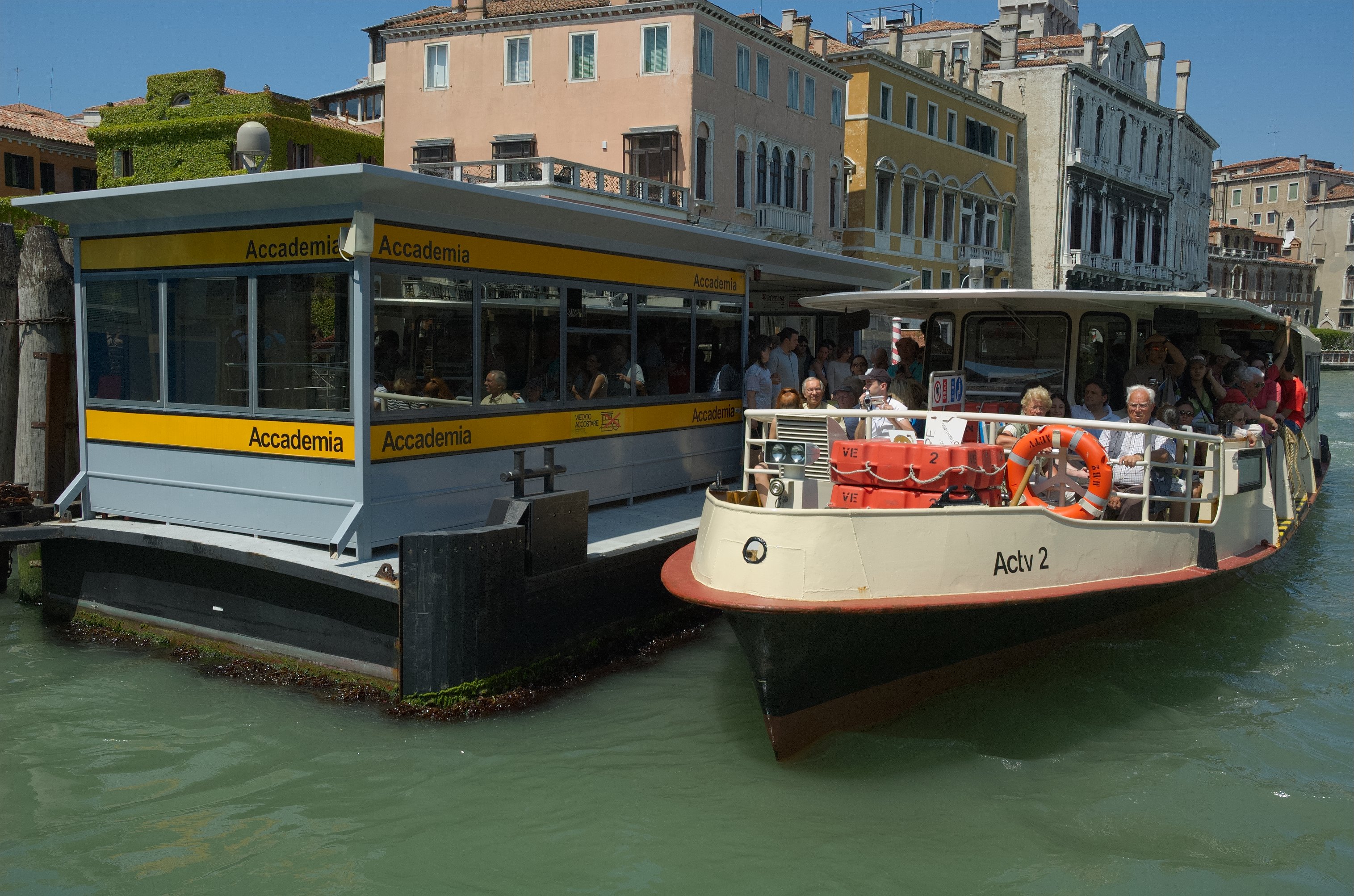|
Bus Priority
Bus priority or transit signal priority (TSP) is a name for various techniques to improve service and reduce delay for mass transit vehicles at intersections (or junctions) controlled by traffic signals. TSP techniques are most commonly associated with buses, but can also be used along tram/streetcar or light rail lines, especially those that mix with or conflict with general vehicular traffic. Techniques Transit signal priority techniques can generally be classified as "active" or "passive". Passive TSP techniques typically involve optimizing signal timing or coordinating successive signals to create a “ green wave” for traffic along the transit line's route. Passive techniques require no specialized hardware (such as bus detectors and specialized traffic signal controllers) and rely on simply improving traffic for ''all'' vehicles along the transit vehicle's route. Active TSP techniques rely on detecting transit vehicles as they approach an intersection and adjusting ... [...More Info...] [...Related Items...] OR: [Wikipedia] [Google] [Baidu] |
Public Transport
Public transport (also known as public transit, mass transit, or simply transit) are forms of transport available to the general public. It typically uses a fixed schedule, route and charges a fixed fare. There is no rigid definition of which kinds of transport are included, and air travel is often not thought of when discussing public transport—dictionaries use wording like "buses, trains, etc." Examples of public transport include Public transport bus service, city buses, trolleybuses, trams (or light rail) and Passenger rail transport, passenger trains, rapid transit (metro/subway/underground, etc.) and ferry, ferries. Public transport between cities is dominated by airlines, intercity bus service, coaches, and intercity rail. High-speed rail networks are being developed in many parts of the world. Most public transport systems run along fixed routes with set embarkation/disembarkation points to a prearranged timetable, with the most frequent services running to a headwa ... [...More Info...] [...Related Items...] OR: [Wikipedia] [Google] [Baidu] |
Bus Terminology
A bus (contracted from omnibus, with variants multibus, motorbus, autobus, etc.) is a motor vehicle that carries significantly more passengers than an average car or van, but fewer than the average rail transport. It is most commonly used in public transport, but is also in use for charter purposes, or through private ownership. Although the average bus carries between 30 and 100 passengers, some buses have a capacity of up to 300 passengers. The most common type is the single-deck rigid bus, with double-decker and articulated buses carrying larger loads, and midibuses and minibuses carrying smaller loads. Coaches are used for longer-distance services. Many types of buses, such as city transit buses and inter-city coaches, charge a fare. Other types, such as elementary or secondary school buses or shuttle buses within a post-secondary education campus, are free. In many jurisdictions, bus drivers require a special large vehicle licence above and beyond a regular driving l ... [...More Info...] [...Related Items...] OR: [Wikipedia] [Google] [Baidu] |
NBC News
NBC News is the news division of the American broadcast television network NBC. The division operates under NBCUniversal Media Group, a division of NBCUniversal, which is itself a subsidiary of Comcast. The news division's various operations report to the president of NBC News, Rebecca Blumenstein. The NBCUniversal News Group also comprises MSNBC, the network's 24-hour liberal cable news channel, as well as business and consumer news channels CNBC and CNBC World, the Spanish language and United Kingdom-based Sky News. NBC News aired the first regularly scheduled news program in American broadcast television history on February 21, 1940. The group's broadcasts are produced and aired from 30 Rockefeller Plaza, NBCUl's headquarters in New York City. The division presides over the flagship evening newscast ''NBC Nightly News'', the world's first of its genre morning television program, ''Today (American TV program), Today'', and the longest-running television series in American hi ... [...More Info...] [...Related Items...] OR: [Wikipedia] [Google] [Baidu] |
Federal Transit Administration
The Federal Transit Administration (FTA) is an agency within the United States Department of Transportation (DOT) that provides financial and technical assistance to local public transportation systems. The FTA is one of ten modal administrations within the DOT. Headed by an Administrator who is appointed by the President of the United States, the FTA functions through Washington, D.C. headquarters office and ten regional offices which assist transit agencies in all states, the District of Columbia, and the territories. Until 1991, it was known as the Urban Mass Transportation Administration (UMTA). Public transportation includes buses, subways, light rail, commuter rail, monorail, passenger ferry boats, trolleys, inclined railways, and people movers. The federal government, through the FTA, provides financial assistance to develop new transit systems and improve, maintain, and operate existing systems. The FTA oversees grants to state and local transit providers, primari ... [...More Info...] [...Related Items...] OR: [Wikipedia] [Google] [Baidu] |
Traffic Engineering (transportation)
Traffic engineering is a branch of civil engineering that uses engineering techniques to achieve the safe and efficient movement of people and goods on roadways. It focuses mainly on research for safe and efficient traffic flow, such as road geometry, sidewalks and crosswalks, cycling infrastructure, traffic signs, road surface markings and traffic lights. Traffic engineering deals with the functional part of transportation system, except the infrastructures provided. Traffic engineering is closely associated with other disciplines: *Transport engineering *Pavement engineering *Bicycle transportation engineering *Highway engineering *Transportation planning *Urban planning *Human factors, Human factors engineering Typical traffic engineering projects involve designing traffic control device installations and modifications, including traffic signals, signs, and pavement markings. However, traffic engineers also consider traffic safety by investigating locations with high crash ... [...More Info...] [...Related Items...] OR: [Wikipedia] [Google] [Baidu] |
Transport Divide
Transport divide (also known as transport exclusion, transport disadvantage, transport deprivation, transportation divide, and mobility divide) refers to unequal access to transportation. It can result in the social exclusion of disadvantaged groups. The concept covers issues ranging from unequal access to public transportation to the unequal opportunities in global migration due to different visa policies as part of the global North–South divide. There are a number of aspects of the transport divide. People may have difficulty in using transport system because of physical barriers, such as a lack of accessibility for the disabled (lack of wheelchair access also impacts people with baby strollers or bicycles). Insufficient labeling can also cause problems for people who do not speak the local language. Financial barriers in the form of cost of services can prevent the poor from using the transport services. Distance barriers (in the form of distance from people's homes) ca ... [...More Info...] [...Related Items...] OR: [Wikipedia] [Google] [Baidu] |
Public Transport
Public transport (also known as public transit, mass transit, or simply transit) are forms of transport available to the general public. It typically uses a fixed schedule, route and charges a fixed fare. There is no rigid definition of which kinds of transport are included, and air travel is often not thought of when discussing public transport—dictionaries use wording like "buses, trains, etc." Examples of public transport include Public transport bus service, city buses, trolleybuses, trams (or light rail) and Passenger rail transport, passenger trains, rapid transit (metro/subway/underground, etc.) and ferry, ferries. Public transport between cities is dominated by airlines, intercity bus service, coaches, and intercity rail. High-speed rail networks are being developed in many parts of the world. Most public transport systems run along fixed routes with set embarkation/disembarkation points to a prearranged timetable, with the most frequent services running to a headwa ... [...More Info...] [...Related Items...] OR: [Wikipedia] [Google] [Baidu] |
Bus Lane
A bus lane or bus-only lane is a lane restricted to buses, generally to speed up public transport that would be otherwise held up by traffic congestion. The related term busway describes a roadway completely dedicated for use by buses, whilst bus gate describes a short bus lane often used as a short cut for public transport. Bus lanes are a key component of a high-quality bus corridor (QBC) and bus rapid transit (BRT) network, improving bus travel speeds and reliability by reducing delay caused by other traffic. A dedicated bus lane may occupy only part of a roadway which also has lanes serving general automotive traffic; in contrast to a transit mall which is a pedestrianized roadway also served by transit. History The first bus lane is often erroneously attributed to Chicago, where in 1939 Sheridan Road was installed with reversible lanes north of Foster Avenue. The setup consisted of three-lanes towards the peak direction (south in the morning; north in the evening), and on ... [...More Info...] [...Related Items...] OR: [Wikipedia] [Google] [Baidu] |
Traffic Signal Preemption
Traffic signal preemption (also called traffic signal prioritisation) is a system that allows an operator to override the normal operation of traffic lights. The most common use of these systems manipulates traffic signals in the path of an emergency vehicle, halting conflicting traffic and allowing the emergency vehicle right-of-way, thereby reducing Emergency service#Response time, response times and enhancing traffic safety. Signal preemption can also be used on tram, light rail, light-rail and bus rapid transit systems, to allow public transportation priority access through intersections, and by level crossing, railroad systems at crossings to prevent collisions. Implementation Traffic preemption is implemented in a variety of ways. Traffic light activation devices can be installed on road vehicles, integrated with transport network management systems, or operated by remote control from a fixed location, such as a fire station, or by an Dispatcher#Emergency dispatchers, emerge ... [...More Info...] [...Related Items...] OR: [Wikipedia] [Google] [Baidu] |





